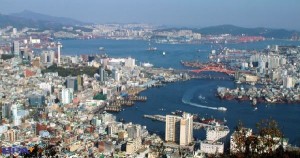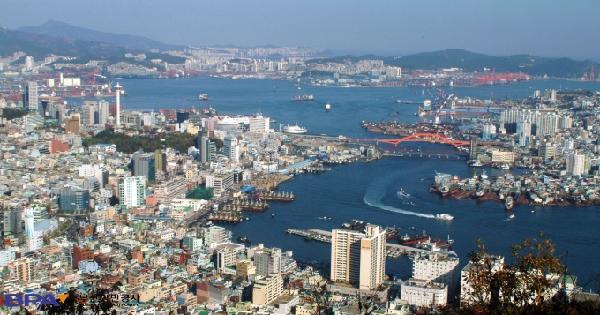 The South Korean government has revealed an expansive long-term plan to transform Busan Port into a global transshipment hub that has the capacity to handle 13 million containers by 2020.
The South Korean government has revealed an expansive long-term plan to transform Busan Port into a global transshipment hub that has the capacity to handle 13 million containers by 2020.
The Korean Ministry of Ocean and Fisheries and port operator Busan Port Authority (BPA) said they will implement concrete plans to consolidate and strengthen Busan’s position as one of the leading global transshipment hubs in the world.
This decision was propelled by the strong growth of transshipment activities at the port, recently averaging 10% year-on-year, while local cargo has increased by 4.2%. In 2014, transshipments finally overtook local cargo operations for the first time in the port’s history when they accounted for 50.5% (9.43 million twenty foot equivalent units or TEUs) of total cargo throughput last year, up from 31.7% in 2000.
Under the long-term vision, the first step is to integrate container-handling activities at North Port and New Port into a single New Port location.
“By integrating all container handling at New Port, it gives North Port the opportunity to develop into a new maritime cluster accommodating maritime manufacturing, marinas, cruise terminals and other facilities,” said an official statement from the BPA.
The blueprint will include creating eight new berths at New Port by 2020 to add a further 6.21 million TEUs to the capacity. Additionally, a feasibility study will investigate the possibility of further expansion to the western container terminal at New Port.
At the same time, a feeder terminal for intra-Asian carriers will be created to serve the feeder network within the port.
To meet the trend for ever-growing container ships, the ongoing dredging to a depth of 17 meters will be completed ahead of schedule in March 2017. Todo Island, currently situated at the port entrance, will be removed by 2019 and the entrance itself will be expanded by the end of 2018.
State-of-the-art, power-efficient container cranes and transfer cranes will be installed at the new facilities, and the existing yard tractors will switch from oil power to electricity. These measures are expected to reduce CO2 emissions by 42%.
For the efficient transfer of transshipment containers, the current multipurpose terminal located between the north and south container terminals will be relocated elsewhere to make way for a yard tractor shuttle road and storage area. A new port-wide ITT platform will control all container movements.
And to generate economies of scale and facilitate these new arrangements, the four existing terminal operators at North Terminal will form a new unified joint venture company with BPA taking a shareholding.
BPA to support SME growth
In related news, BPA said it will increase its participation in the Industry Innovation Movement organized by the Ministry of Trade, Industry and Energy that aims to improve the productivity of small and medium-scale enterprises (SMEs).
The movement involves providing support and assistance to SMEs by large corporations. The project supported 1,500 SMEs when it was established in 2013, and aided 1,400 more small firms last year.
For its part, BPA plans to provide KRW163 million (US$140,856) through 2017 to the movement that it joined last year. Moreover, the authority intends to offer SMEs in the maritime sector consulting services, facility investment, technology support, and training.





